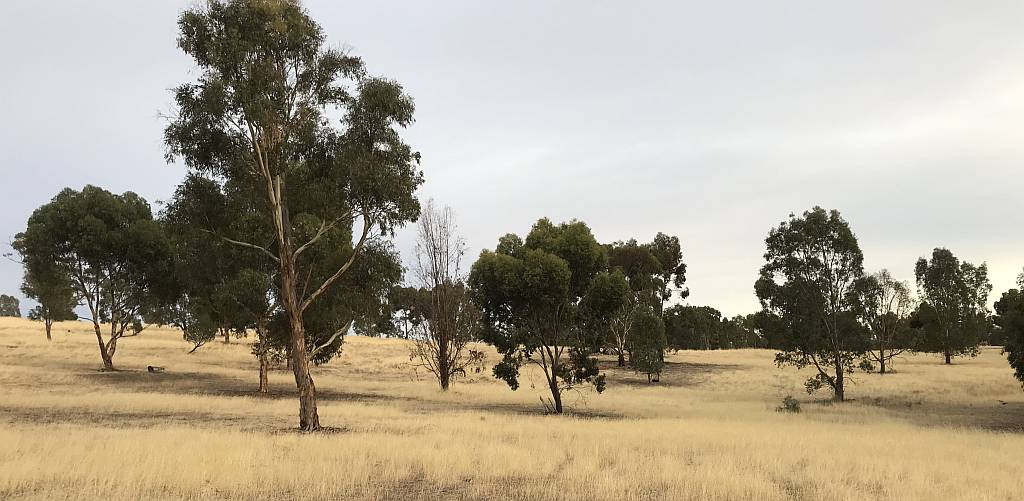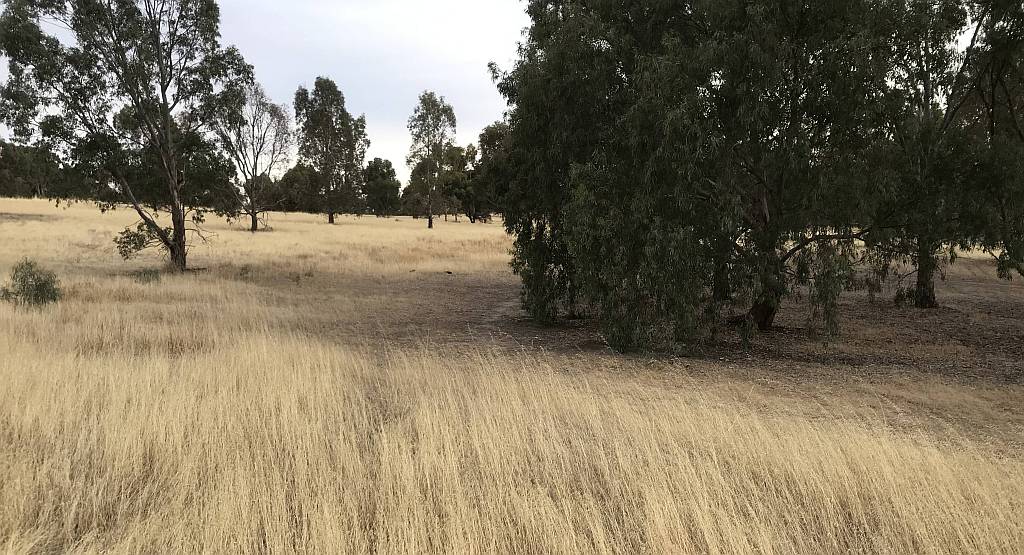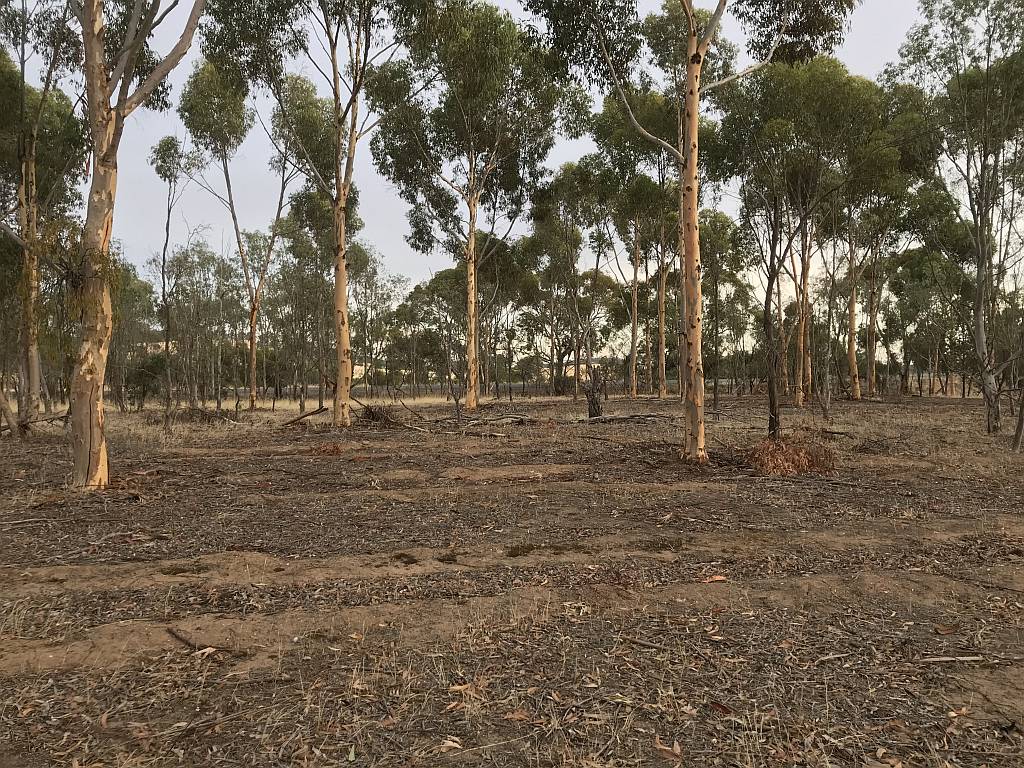
Photographed in January 2020
|
|
|
|
Gum trees (Eucalyps) on my property near Clare, South Australia
|
|---|

|
Note that there is much less grass near the base of the trees. Photographed in January 2020 |
|
Anyone who has grown wine grapes in South Australia will tell you that vines are much weaker within 40 metres or so of established gum trees.
It is the same with grass.
Closely planted gum trees will stop most grass from growing at all. Even scattered trees, as on most of my property, reduces the amount of grass, especially close to the tree. On the other hand, leaf litter can build up beneath the trees and produce its own fire-load. |
More gum trees on my property near Clare
|
|---|

|
Again, there is much less grass near the base of the trees. Photographed in January 2020 |
|
Of course the trees themselves can burn if a fire is hot enough.
Whether green leaves on a gum tree will burn in a bushfire depends on how much flammable grass, shrubbery or leaf-litter there is beneath the trees.
A fire in which the leaves on the trees burn is called a crown fire. I have not known a crown fire to occur in the Clare area, but they certainly do occur elsewhere in Australia. In my area while some of the bark low on the tree will burn, the leaves very rarely have; they are usually killed by the heat of the fire and fall to the ground some weeks later. |
Closely planted gum trees on my property
|
|---|

|
There is practically no grass, but there is significant leaf-litter, beneath these trees.
They were planted about 1995. Photographed in January 2020 |
|
If there are many trees and there is little or no grass, or other flammable low-growth, beneath trees the trees will not catch fire and there is little else to burn.
|
|
|
The Australian fires of 2019/20, if not caused by
climate change, were made far more likely to happen by climate change.
We can expect many more fires such as these if we do not take climate change seriously in hand.
Government, public and media reactions to the fires concentrated on the fires themselves, recovering from the fires and compensating people and businesses for the damage they suffered from the fires. The fires were a symptom; the problem is climate change.
Even climate change is not the ultimate cause of the problem.
We would have controlled climate change by now if not for selfishness, greed and apathy; collectively these are the first cause of the fires.
I have ample reasons to be aware of changes in fire danger. |
Related pagesRelated pages on this site...Bushfires in relation to climate change in AustraliaFirewood, an environmentally responsible fuel Climate change in the international context and in the Australian context |
|
|